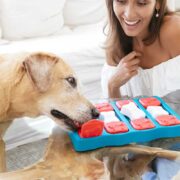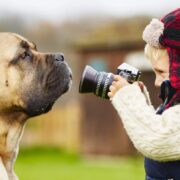Belly buttons are pretty noticeable on human beings. Whether someone has an innie or outie, it’s obvious that they do indeed have a belly button. What about our pets? Do dogs have belly buttons? They do!
That’s right. Dogs have belly buttons just like us. Now, you may be wondering: Where do I find it on my pup? And what does my dog’s belly button look like?
Here’s the deal on dog belly buttons.
Belly Buttons in Human Babies vs. Puppies
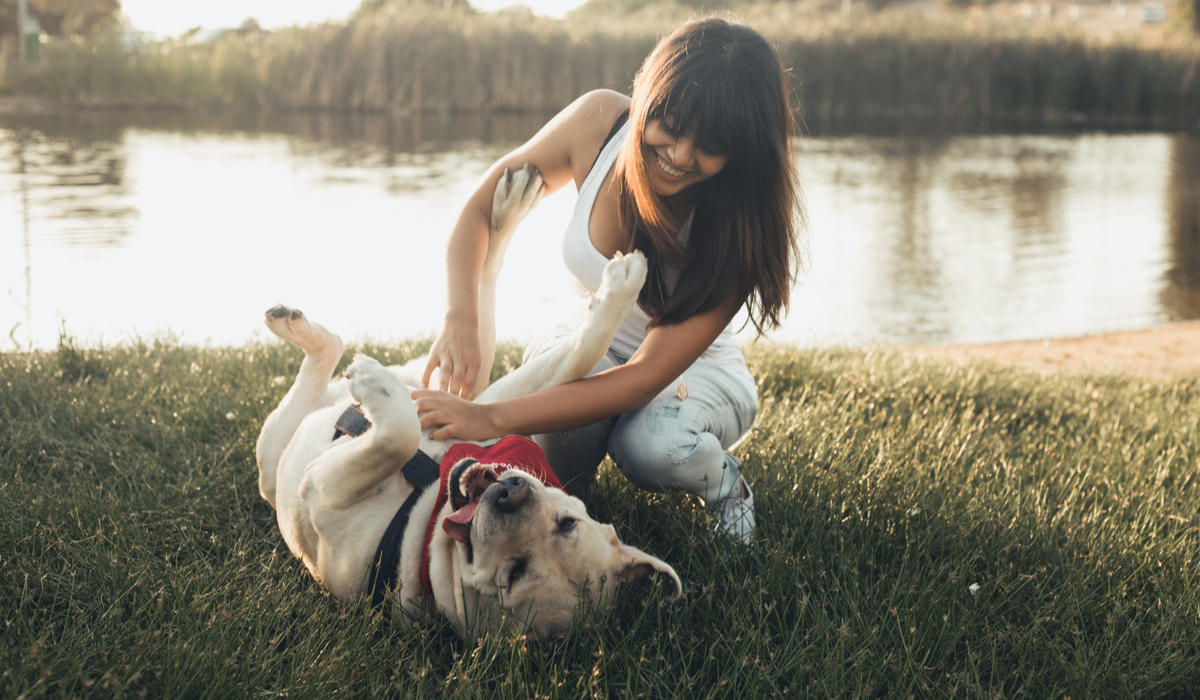
Human belly buttons are scars that stayed on us where we were connected to the umbilical cord throughout gestation in our mother’s womb. All mammals, except for marsupials like kangaroos and monotremes like the platypus, deliver food to their babies in the womb through the umbilical cord. Only placental mammals have belly buttons.
During the birthing process, puppies come out in a fluid-filled sac that is connected to their mother’s placenta through an umbilical cord. When each puppy is born, the mother dog will bite off the umbilical cords, and then in one to three days, the umbilical cord stump will dry up and then fall off of the dog’s navel. The puppies will be left with a flat scar.
Why Can’t I See My Dog’s Belly Button?
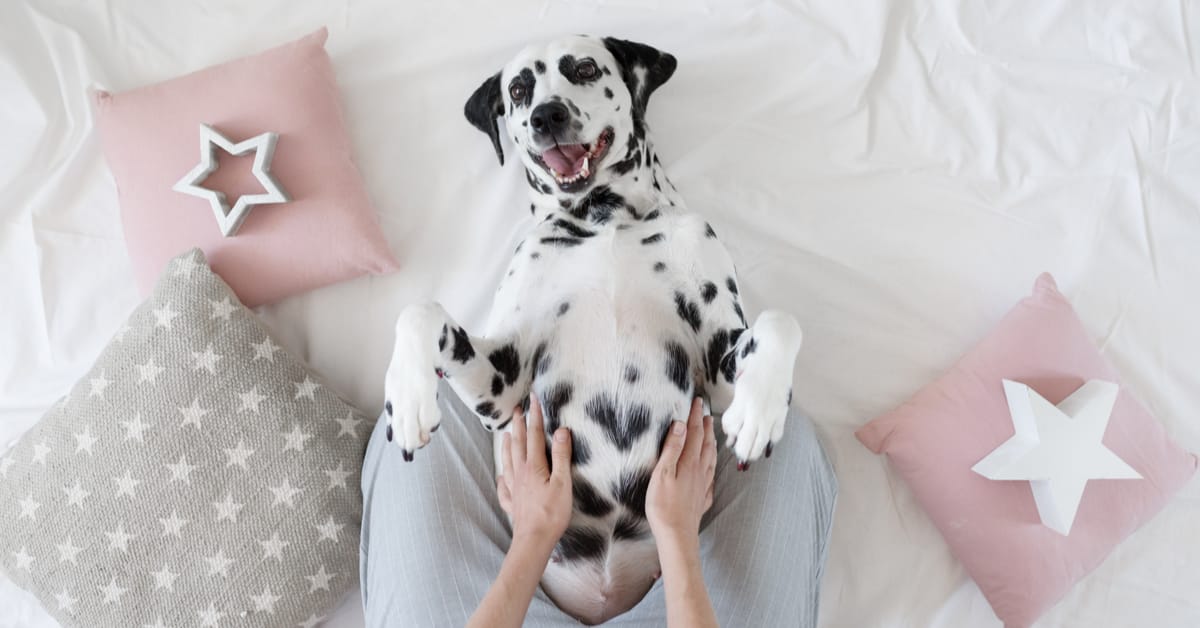
Usually, you can see the belly button on a puppy’s belly. But once your dog becomes an adult, it’s likely not going to be visible anymore. This is because the umbilical cord is small. Human umbilical cords are much bigger because humans are larger than dogs. Therefore, the cords leave a bigger scar.
The umbilical scar will look like a small slit on a puppy when it heals instead of a round hole. Typically, fur will cover that small slit, so dog owners won’t be able to see it. There are no innies and outies when it comes to dog belly buttons.
However, if you search for small scar tissue that is the belly button, you may be able to find it. It’ll be on the middle of your pup’s abdomen, right under where the rib cage ends. It may look like an oval or circular wrinkle on their skin or a small and flat vertical scar. When you give your pup belly rubs, you may notice that your dog’s hair swirls or there is a tuft near the belly button.
Possible Health Issues With Dog Belly Buttons
Keep in mind that if the belly button is protruding past early puppyhood, then your dog could be experiencing an improper closure of the muscles, or your dog might have an umbilical hernia. Some dog breeds are more prone to hernias than others. They include Airedale terriers, Basenjis, beagles, and Pekingese.
If you have a puppy, then make sure you pay close attention to his belly area during the first few months of his life to ensure that a hernia isn’t developing.
Taking Care of Your Dog’s Belly Button
Your dog’s belly button doesn’t require any special care; just make sure you check your puppy and adult dog’s stomach for any warning signs of a hernia or other issues. Then, you can ensure that your pup will be happy and healthy no matter what.
Why Is My Dog Sniffing My Button Belly?
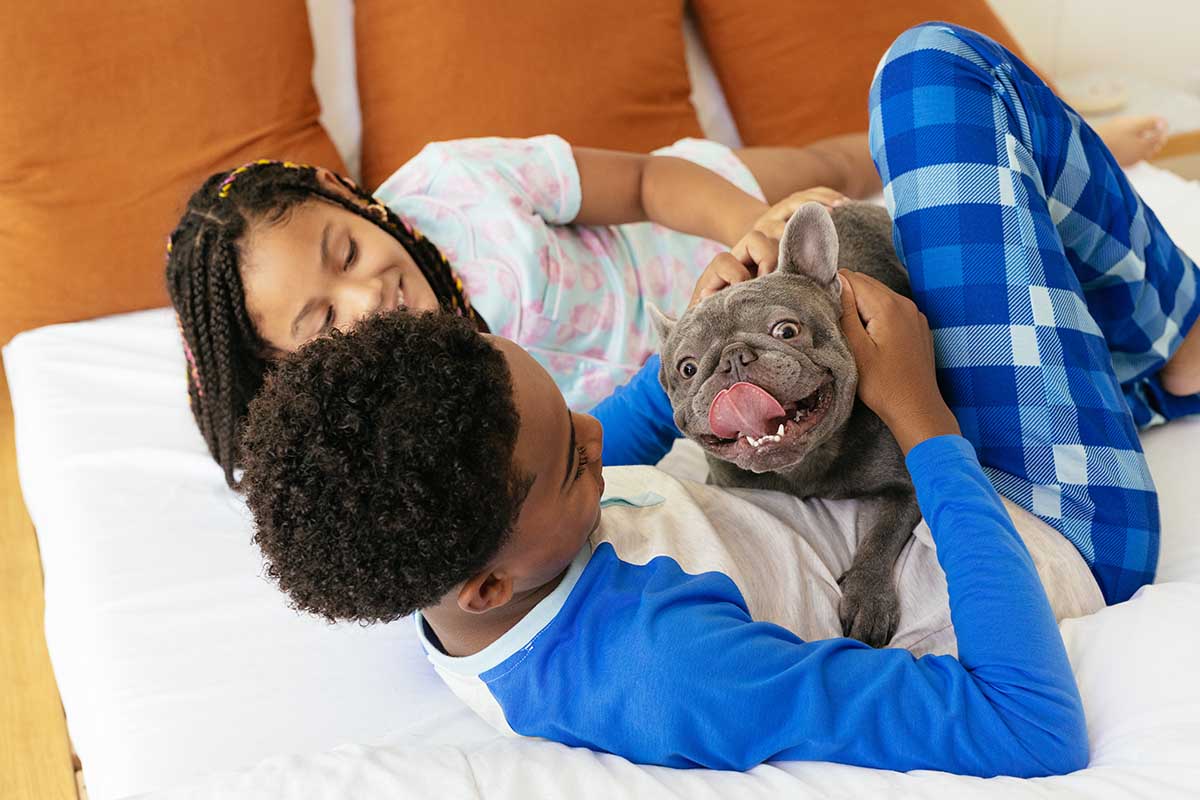
If you see that your dog is sniffing your belly button and wants to lick it, that’s perfectly natural. Dogs love human navels because they trap lint and sweat, and your dog may like that scent and want to sniff it and/or lick it.
If you are pregnant, your dog is hanging around your belly because they can smell a change in your scent caused by all of the hormones. They’re just curious!
If your dog’s exploration of your belly button is bothering you, then you can use positive reinforcement training and simply tell him to get down. Then, give him a treat when he listens to you.
More on the Canine Gestation Process
Now that you know all about dog belly buttons, you may be wondering about the gestation process in general, especially if you have a new puppy or you’re going to get one soon.
The gestation period in dogs lasts 57 to 65 days, but the average time period is 63 days. Veterinarians will determine a dog is pregnant by administering a blood test to detect the hormone relaxin. Even if the result is positive, it doesn’t mean the pregnancy will ultimately be successful.
At three to four weeks after mating, a veterinarian can perform trans-abdominal palpation to see if a dog is pregnant, but the results are going to vary. An abdominal ultrasound can be done as early as three weeks to detect pregnancy, and an X-ray during the last two weeks of the pregnancy can show you the litter size. It’s important to do this X-ray so that when your dog is giving birth, you know exactly how many puppies to expect. Then, they will have a much better chance of being born and being healthy.
Taking Care of Newborn Puppies
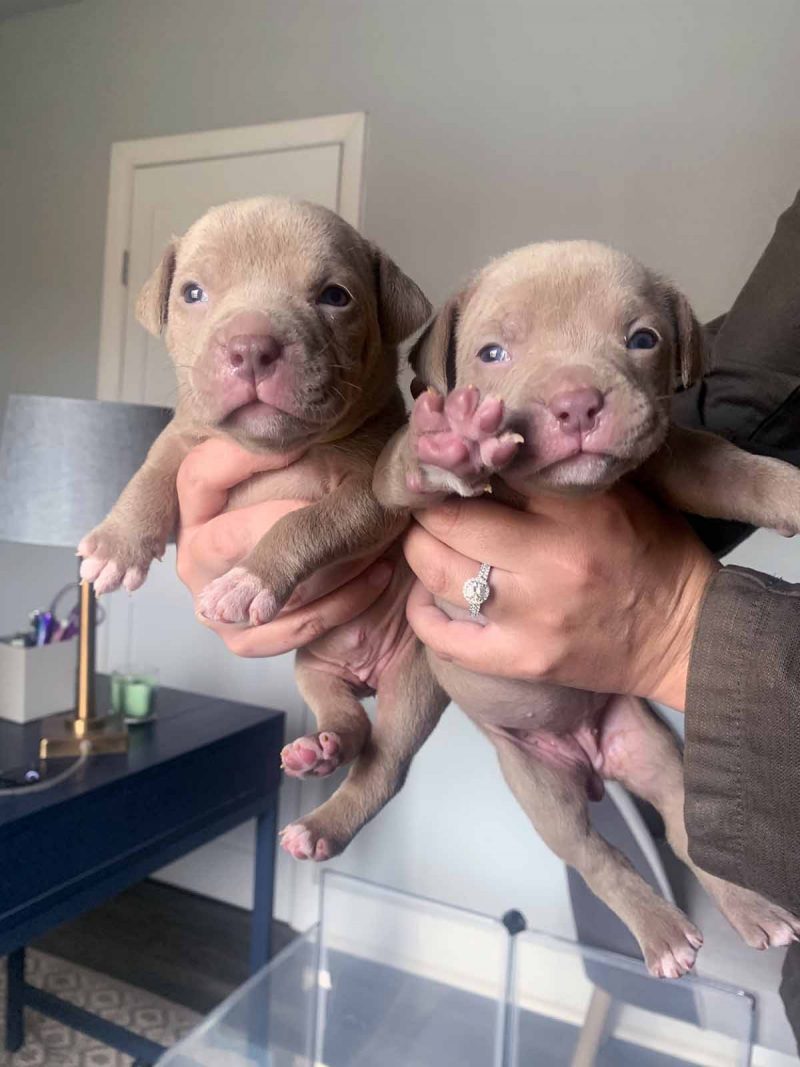
If you’re taking care of newborn puppies, there’s more you have to do aside from inspecting their belly for signs of a hernia. Newborn puppies are born blind and mostly deaf, and they will not have any teeth. At around 10 to 14 days of age, they will typically open their eyes, and around eight to 10 weeks of age, a puppy’s true eye color will set in.
Just like newborn babies, newborn puppies will feed every few hours on their mother’s breast milk. It’s important to make sure that all the puppies are feeding well and they are warm and gaining weight. If they are not gaining weight or they are losing weight, then you should let your veterinarian know as soon as possible. They will determine if you need to bottle feed them with milk replacement formula instead.*
Your puppies should always be kept in a warm room, or you can put a heat lamp over where they are nesting with the mother dog. The room should be 85 to 90 degrees Fahrenheit for the first few days, then 80 degrees Fahrenheit by the end of the first week, and 72 degrees Fahrenheit at the end of the fourth week of life.
Puppies can eat solid food at around four weeks of age. At first, you’ll want to mix the puppy food with water to make it easier for them to eat. Additionally, you’ll start to see your puppies becoming more playful and teething at this age. It’s critical that you introduce age-appropriate toys when they are teething.
*Note that you should never feed cow’s milk to a puppy since it won’t provide them with the right nutrients they need to grow and thrive.
Toys for Puppies
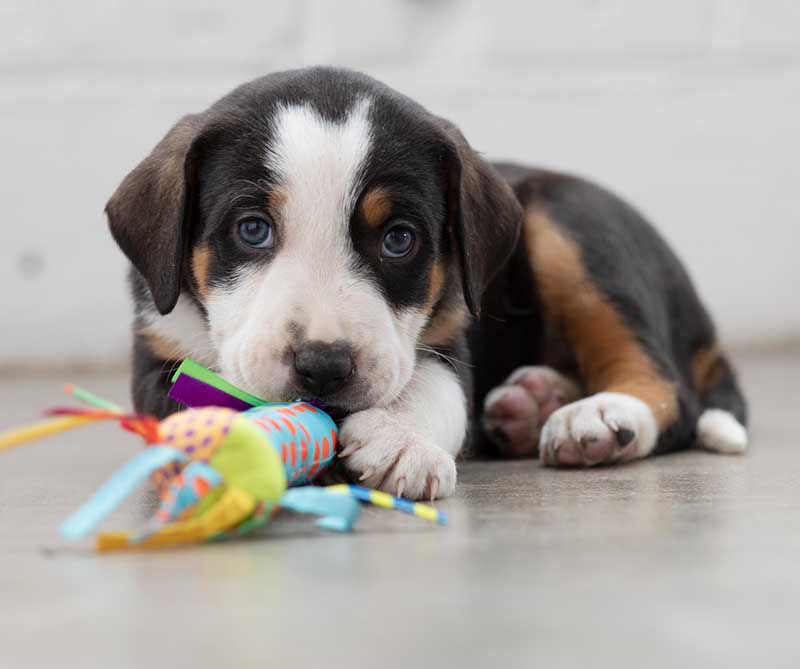
To keep your puppy occupied, you could get him Outward Hound’s Puppy Hide N’ Slide Interactive Treat Puzzle Dog Toy, which will stimulate his brain at treat time and allow you to hide his favorite snacks.
Another great option for new puppies is the Mini Bone Tug Puppy Chew Toy, which is perfect for teething. It will gently massage your puppy’s gums and improve his dental health. Plus, it will work to reduce destructive chewing at this stage in his life.
For more ideas, check out our complete list of the best toys for puppies.
